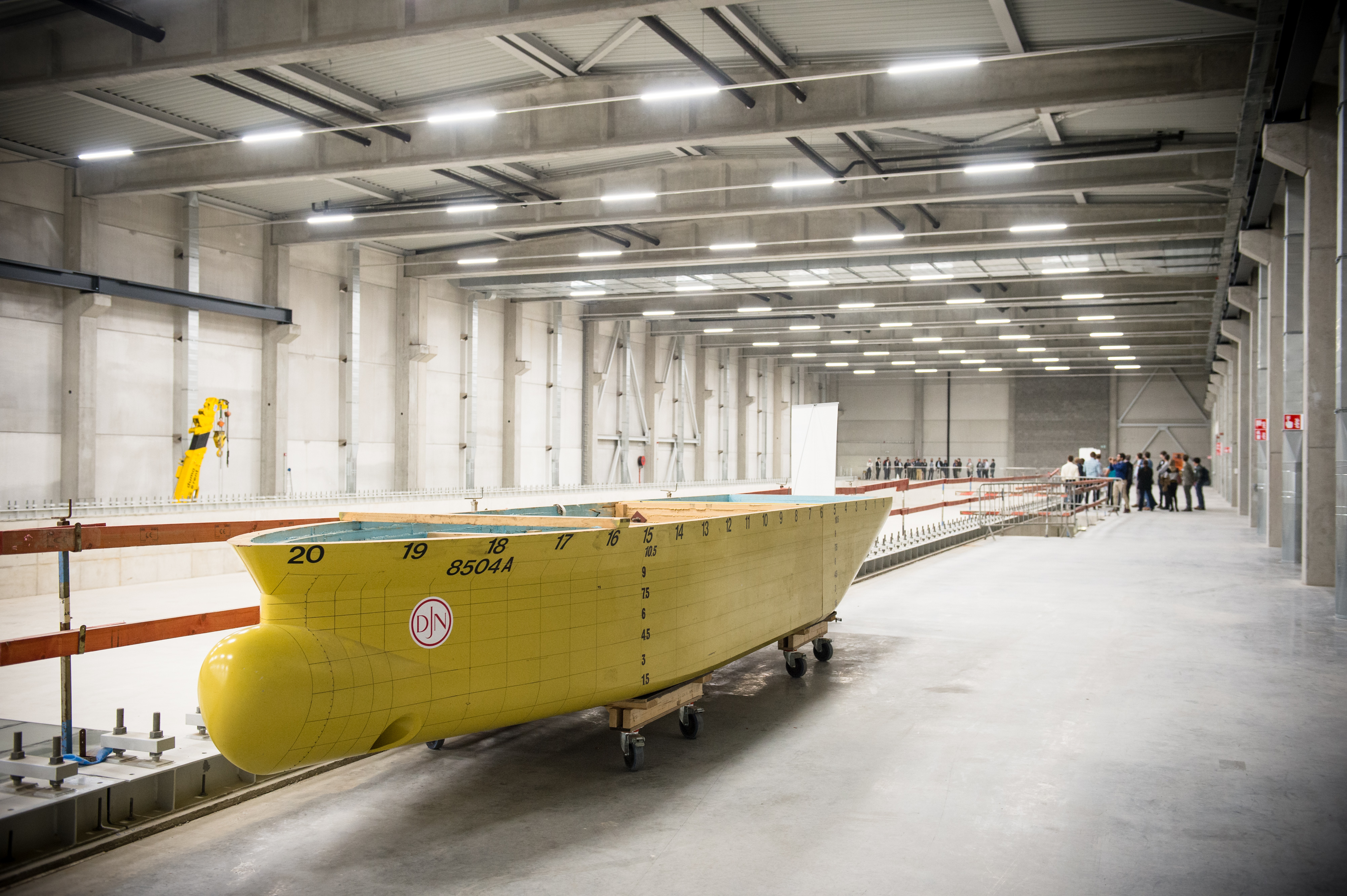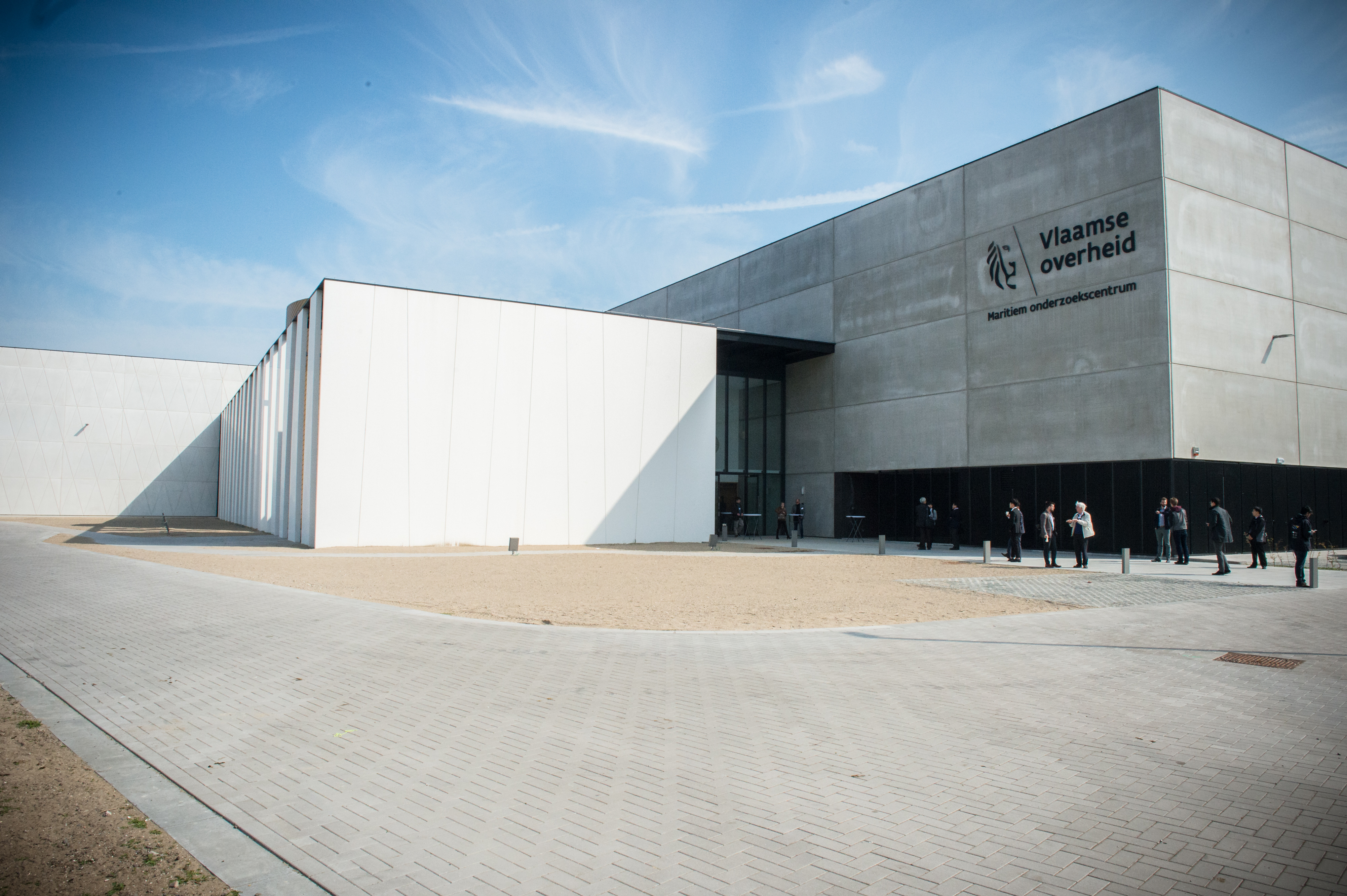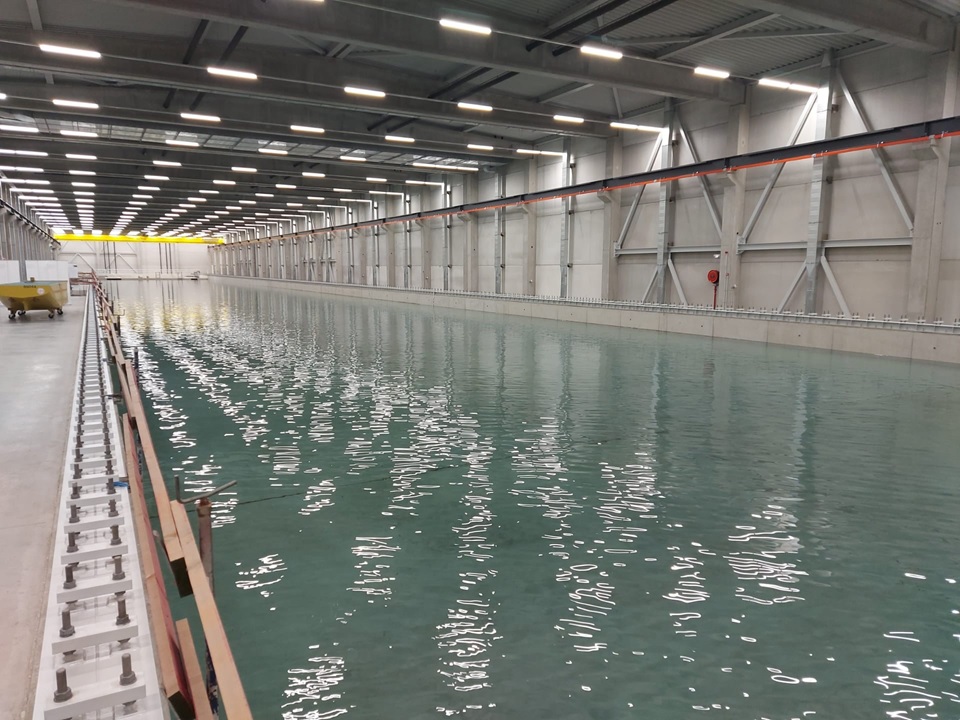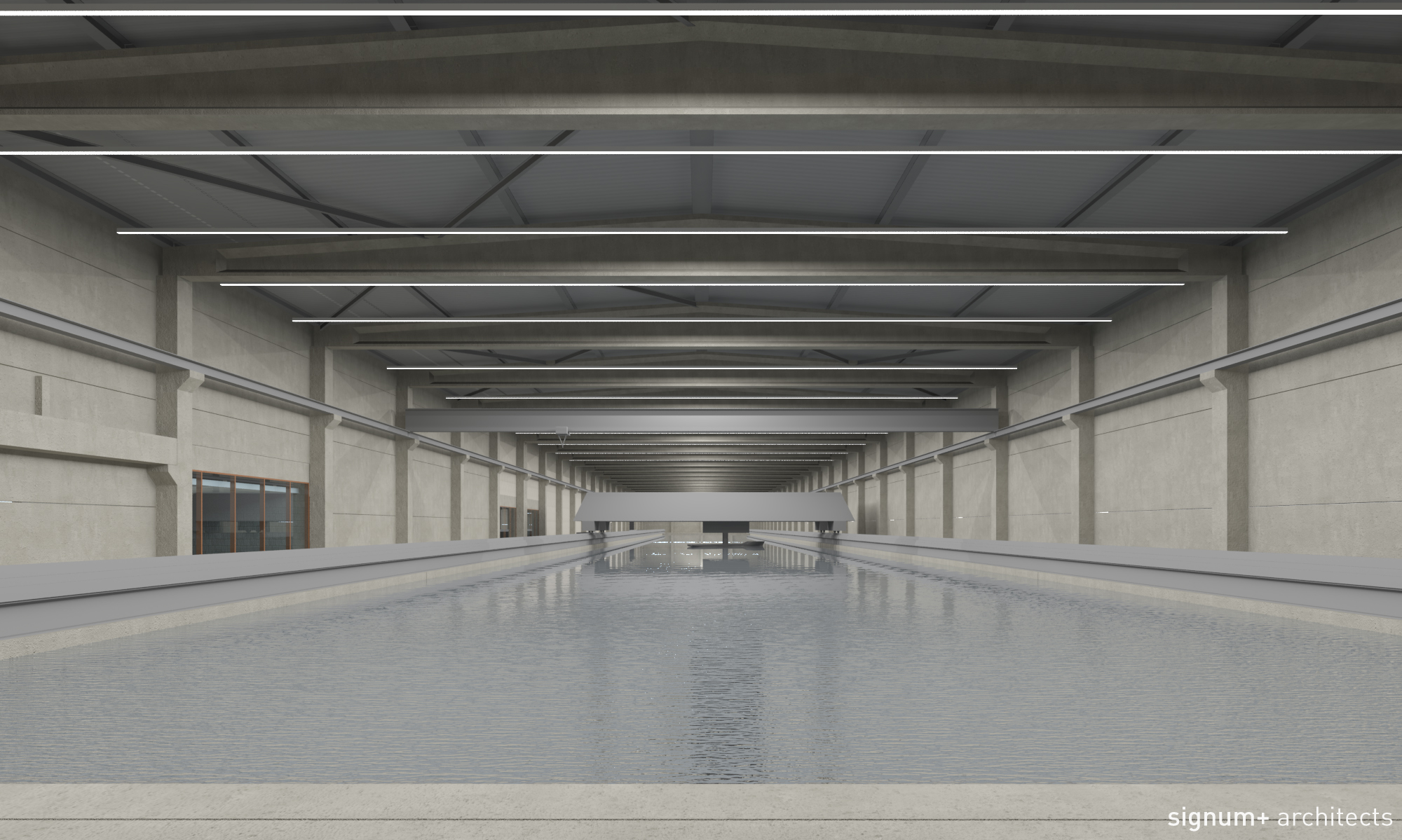TOWING TANK FOR MANOEUVRES IN SHALLOW WATER (2020)
Introduction

Flanders Maritime Laboratory was officially opened in May 2019. This new research laboratory in Ostend (Belgium) is operated by Flanders Hydraulics Research, Ghent University and KU Leuven University. Flanders Maritime Laboratory hosts two state of the art model scale facilities for the maritime industry, namely a Coastal & Ocean Basin (COB) and a Towing Tank for Manoeuvres in Shallow Water.
In 2019-2021 both facilities will be instrumented. A description of the instrumentation and the reasons behind the parameter selection is given in the paper Coastal & Ocean Basin and Towing Tank For Manoeuvres In Shallow Water at Flanders Maritime Laboratory by Delefortrie et al. (2019), which was presented at AMT '19.
The Towing Tank for Manoeuvres in Shallow Water will also have an observation tunnel to investigate the flow between the keel of the ship and the bottom. The flow between the ship and the tank walls can be visualized with side windows at discrete positions along the tank.

Main dimensions
| Total length | 174.0 m |
| Effective length (8 m ship model) | 134.0 m |
| Width | 20.0 m |
| Maximum water depth | 1.0 m |
| Length of ship models | 3.5 to 8.0 m |


Picture courtesy of © Vlaamse Overheid - Patrick Vanhopplinus
Carriage
The functionalities of the shallow water towing tank are based on the experience gained over 25 years of shallow water towing tank testing at FHR. Like the confined towing tank in Antwerp, the new carriage will be fully automated to enable 24/7 testing. Automated testing is important since a large number of parametric variations are necessary to achieve enough data to build an accurate mathematical model of the ship behaviour, especially when covering harbour manoeuvres in shallow or confined water. Fully automated testing requires machinery with a very high degree of reliability and a very high safety standard. Safe zones for witnessing tests on and off the carriage will be created to allow researchers and clients to approach the ship models during tests and provide ample video registration.
The kinematics of the carriage allow for shallow water manoeuvring testing with ship models of displacement cargo vessels, such as bulk carriers, tankers or container vessels. Observe that in the beginning a 4 DOF steering system will be deployed allowing the ship model to freely heave and pitch
The carriage is composed of:
- A longitudinal main carriage allowing a steady velocity of 3 m/s and test acceleration of 0.4 m/s²
- A detachable, so-called visitors' carriage, which allows people to travel with the main carriage;
- A lateral main carriage, which allows a sideway motion of 19.5 m, a steady velocity of 1.3 m/s and a test acceleration of 0.7 m/s²
- The lateral main carriage is designed as a rectangular frame, which carries a vertical carriage and a yaw system. A travel of 1.8 m is possible in the vertical direction, with maximal speed of 0.7 m/s and maximal acceleration of 0.7 m/s².
The yaw carriage allows a rotation between -365 and +365 degrees, at maximal speed of 16°/s and maximal acceleration of 8°/s.
The manufacture of the carriage parts and subsequent assembly is expected to cover the entire year 2022.
Wave generator
A wave generation mechanism is foreseen at the positive end of the tank. A wave damping mechanism has to be installed both behind and in front of the wave maker, the latter only when the wave maker is not operated. At present a piston type wave maker with segmented flaps covering the entire water depth (1.25 m) is preferred.
